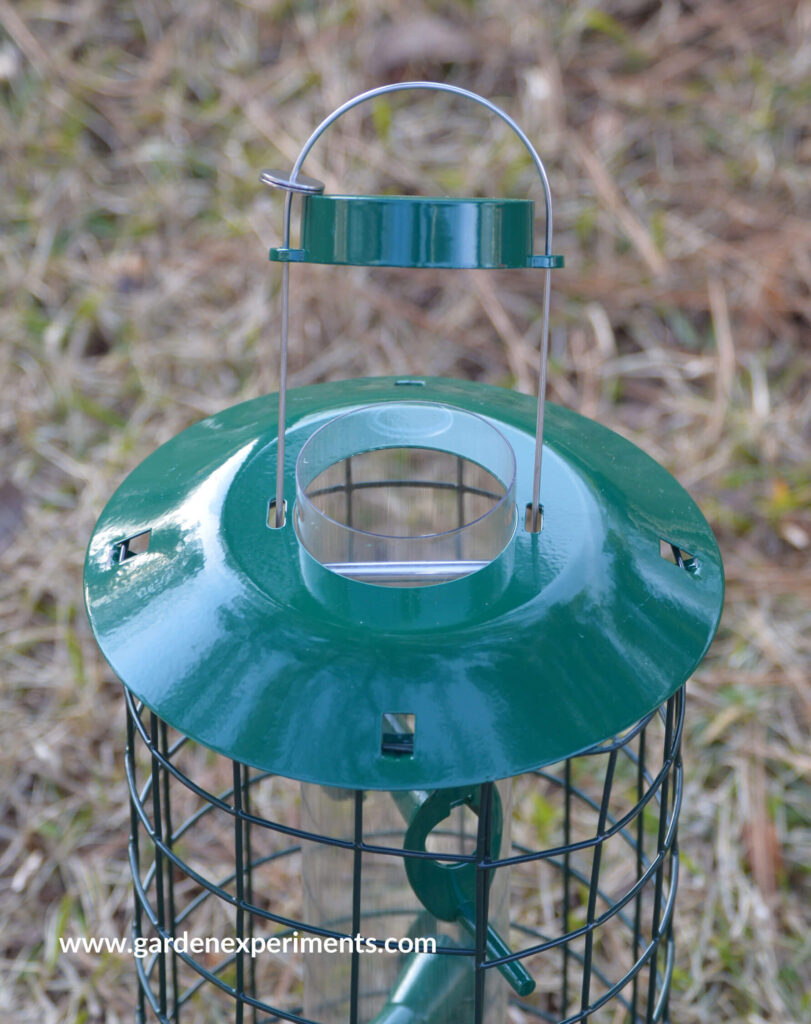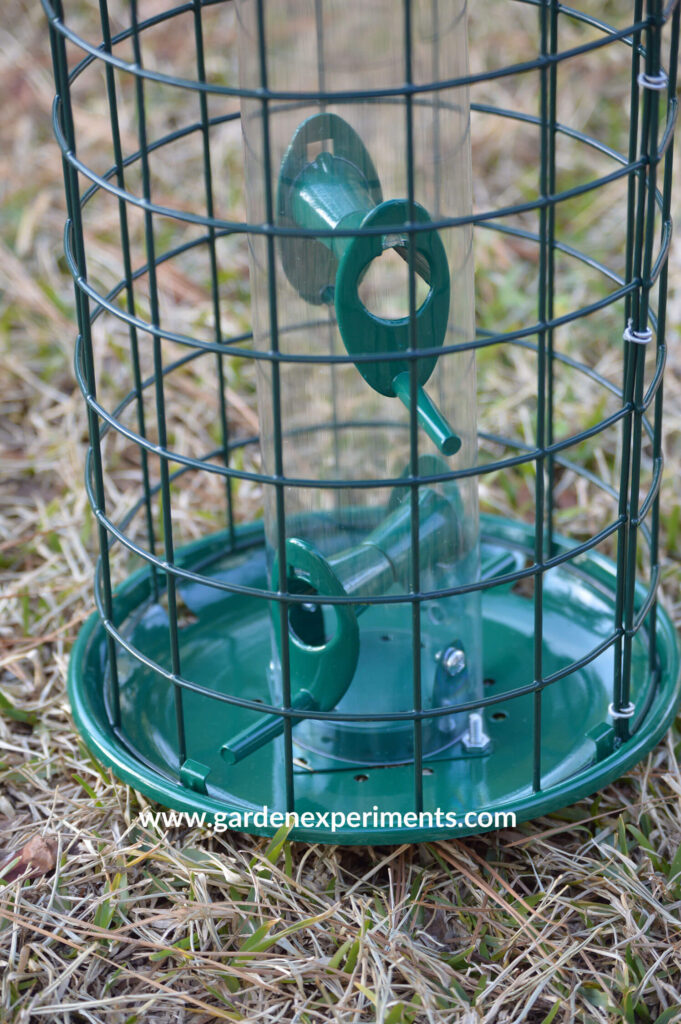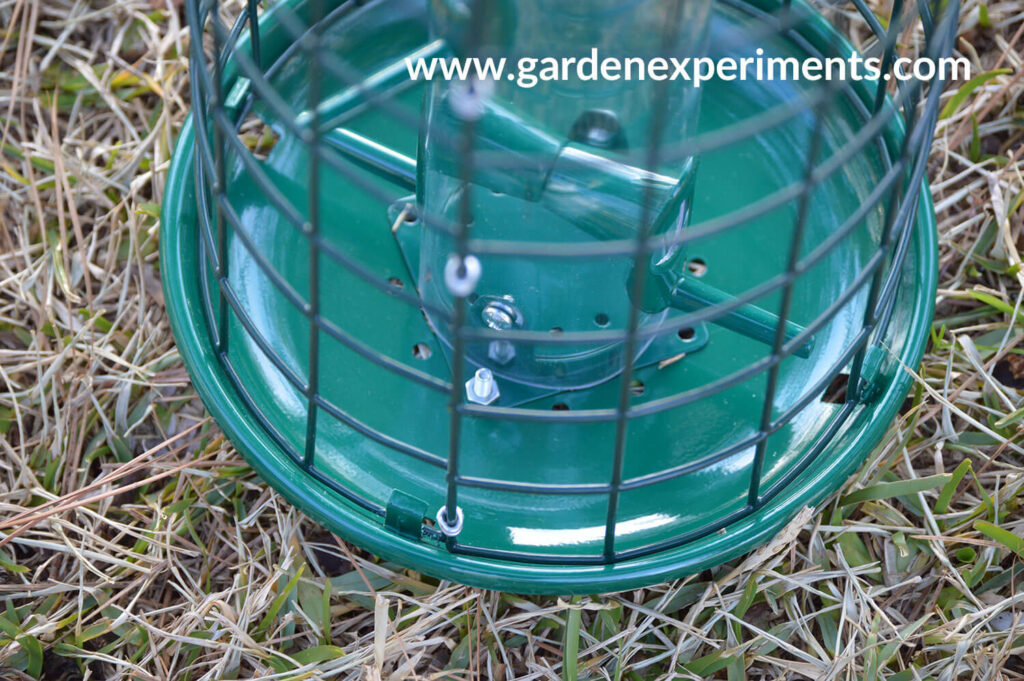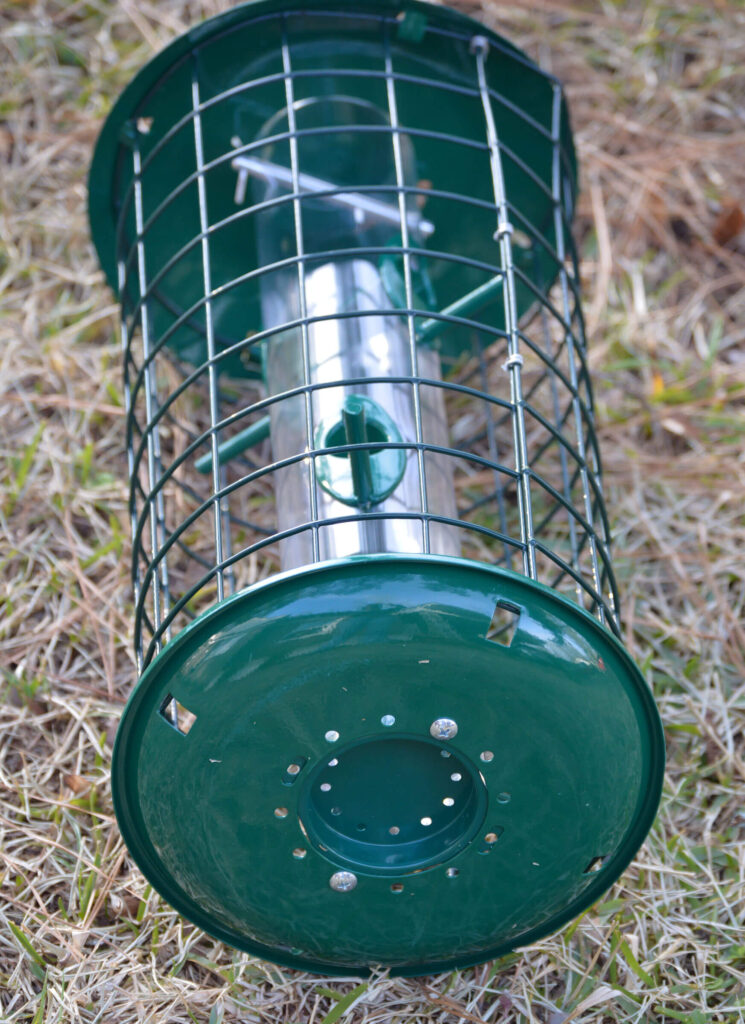This content includes affiliate links. I get a small percentage of the sale for purchases made through links in this post. However, I use each product I review and only recommend those that I like and have worked well. Read my disclosure for more information.
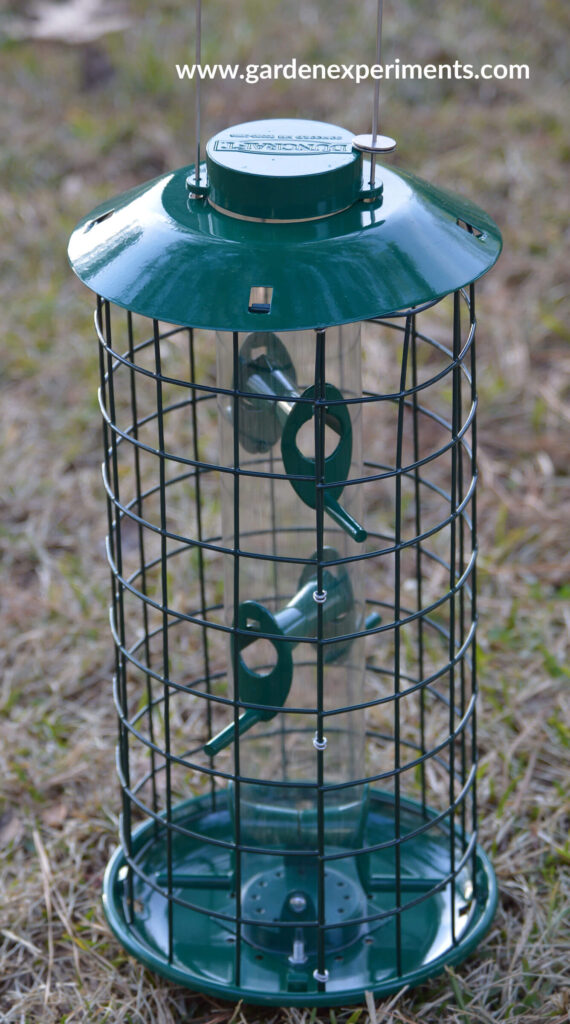 This is another sturdy Duncraft bird feeder, but it is specifically designed to allow small birds to feed while keeping more aggressive, larger birds at bay. The outer cage is metal with a roughly 2-inch diameter between wires, allowing smaller birds to pass through while keeping larger birds out.
This is another sturdy Duncraft bird feeder, but it is specifically designed to allow small birds to feed while keeping more aggressive, larger birds at bay. The outer cage is metal with a roughly 2-inch diameter between wires, allowing smaller birds to pass through while keeping larger birds out.
While it’s a good concept, this particular design could be much easier to use for us humans. It has one main problem – filling the feeder with the cage and squirrel stoppers causing problems.
This feeder is essentially the Duncraft Original Tube Feeder (read my review of it), but it has the added cage feature. In that sense, it has the metal ports, which prevent squirrels from chewing them apart to access seeds. The rust proof metal ports, lid, and base are attached to a polycarbonate tube. The tube is a little thicker than the one on cheaper versions of feeders you can get at local stores.
This feeder holds about 4 cups of seeds – which seems to be average for a feeder. It is 15.5 inches tall and has a good strong wire to hang from. With the cage, this feeder is around 7.5 inches wide.
Pros
- Very sturdy construction
- Will last a long time
- Allows small birds to feed unbothered by bigger birds
Cons
- Difficult to fill with seed
- Difficult to clean properly
- Expensive
- Tray traps seeds
Unfortunately, this feeder is very difficult to fill unless there is more than one person to help with the process. The lid partially blocks the opening when it is raised up; the lid is not able to go to the side of the feeder to allow for you to easily fill the tube due to the presence of the metal cage. The wire hanger is just not able to drop to the side. When you add this issue to the squirrel locks on the top that keep pushing the lid down and locking it, well, let’s just say it was a bear to get filled. I got so frustrated with this feeder that I gave it to an unsuspecting friend. Hopefully he has more patience than I did.
This feeder is very hard to clean because it is difficult to access the ports with a brush and because the base is attached to the feeder with several screws and clips. Anyone who uses different sizes of seeds knows that they eventually work their way into the base or pieces of seeds get in the base and the base must be removed to get them out. Otherwise you have bits of seed hull composting and molding at the bottom of your feeder.
Keeping our feeders clean keeps the birds healthy. It requires a good bottlebrush, a bleach and water (1 part/9 parts), and the ability to get the base off of the feeder (read the full instructions on cleaning feeders). The seeds just eventually work their way down into the base of the feeder, between it and the polycarbonate tube. If you leave it there, it will mold.
The tray attached at the base of the feeder catches some seeds and can hold moldy seeds if you don’t clean it regularly. I prefer to have my seeds go to the ground so that birds that prefer to ground feed can get some (such as mourning doves, sometimes even indigo buntings – and of course, the squirrels).
Based on the fact that there are other “caged” feeders that are easier to clean and maintain and a lot cheaper, I would not recommend purchasing this feeder.
Read the review for multiple tube feeders here.
NOTE: This article includes affiliate links. I purchased this feeder myself (I’m a bit of a backyard birding enthusiast) and am reviewing it based on my experience of the last year and a half of using the feeder in the conditions of my backyard in zone 7b.
Bird Feeding Add-Ons
Bird Seeds Scoop & Funnel
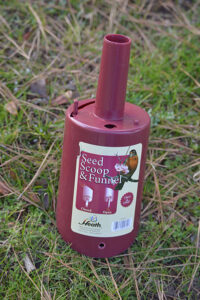 This simple little device is awesome! It makes it so easy to fill up a feeder. Rather than taking the bag and attempting to aim the seeds into a small opening, you can scoop them out and make sure you don’t miss a single seed!
This simple little device is awesome! It makes it so easy to fill up a feeder. Rather than taking the bag and attempting to aim the seeds into a small opening, you can scoop them out and make sure you don’t miss a single seed!
My only problem with this scoop is that it occasionally gets clogged when you are working with sunflower seeds – you just have to shake it a little to or close and open the damper to get it going again.
The scoop is made of heavy plastic, so it’s very durable. I’ve had mine for 3 years now and it works the same as it did the day I purchased it.
HOW IT WORKS: Use it as a scoop to scoop seeds then stand it up right and open the damper to let the seeds go into the feeder. Great for hitting a small hole.
HINT: Always check to make sure damper is closed before you fill it. Damper allows you to stop the flow of seeds easily so you don’t overfill.
Squirrel Stopper Pole
My solution to preventing squirrels from getting to the birdseed is to keep them from getting to the feeders. The only thing that has ever worked for me is to hang my feeders on this is the Squirrel Stopper Pole. Despite the claims of many birdfeeders, I have found that once a squirrel reaches a feeder, they will find a way to get to the seeds. I’ve seen squirrels hang upside down by their toes to be able to pull seed out from a port and feed on it. I’ve had my squirrel stopper bird feeder pole for several years now and I still love it. It keeps the squirrels from ever reaching the bird feeders since they can’t climb up the pole. Read more about this pole.

